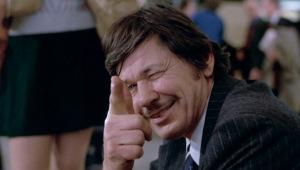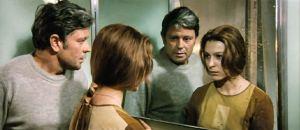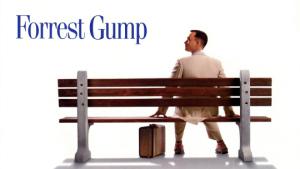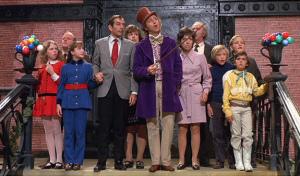Despite what Saving Mr. Banks argues, author P.L. Travers reportedly hated Disney’s adaptation of Mary Poppins. Her tears at the premiere were not brought on by joy but instead absolute horror at what had been done to her characters, those of whom even made it into the film. Of course, she had total script approval, and probably shouldn’t have been all that surprised. Plus, despite whatever she might have thought the public adored the movie, and it is considered a classic. The Academy Awards liked Mary Poppins so much they nominated it for Best Picture.
Travers’ experience is far from unique. Countless novelists have had their works of fiction adapted into movies which they ultimately detested. This is easier to understand when the resulting film is quite bad, like 2005′s Sahara, adapted from a Clive Cussler novel. There are also famous examples of authors who completely reversed position once they’d actually seen the movie, like Anne Rice’s odd “I hate Tom Cruise” to “I love Tom Cruise” conversion after finally seeing Interview with a Vampire. However, it’s a bit more challenging to completely understand the objections raised by authors to film adaptations that are generally regarded by everyone as being fantastic if not classic works of cinema. Perhaps they are too close to the material, or maybe they’re right and we’re wrong. Ultimately, the boost to a novel’s sales from a successful film adaptation likely pay off (literally) in the end, and anyone who wants to see the author’s original vision can just read the book. However, here are 5 examples of authors who hated beloved and/or financially successful films adapted from one of their novels:
1. Brian Garfield, Death Wish (1974)

The Novel Vs. Movie: The basic plot is the same. A middle-aged architect named Paul and his wife and daughter are accosted by street punks, who murder the wife and beat and rape the daughter, leaving her in a vegetative state. To deal with his grief, the architect buys a gun and begins hunting down muggers and criminals, using himself as bait. However, in the novel the vigilante justice angle does not happen until the final 50 pages, and the actions of the main character are not depicted as being the sympathetic lashing out of a unjustly wronged person. Instead, it is made clear he seeks not vengeance but instead regaining the feeling that he is in control of his own life. The film ignores all of that and goes for more of an avenging badass, as so mock-ably portrayed by Charles Bronson.
Death Wish was a controversial movie at the time of its release, but it grossed $22 million and four increasingly exaggerated sequels. To some degree, the formulaic and hilariously awful sequels have improved the reputation of the original Death Wish over the years, as by comparison it now looks like a masterpiece.
Why He Hated It: Garfield argued that the film romanticized violence and advocated vigilantism, running counter to the point of his novel. He was so displeased he published a sequel novel, Death Sentence (1975), in which Paul’s actions inspire a far deadlier and violent copycat vigilante thus leading Paul to second guess what he has become. This was eventually adapted into a little-seen Kevin Bacon movie of the same name in 2007, though its plot deviated greatly.
2. Stanislaw Lem, Solaris (1972)

The Novel Vs. Movie: The basic plots are the same. There is an alien intelligence so vast it is best classified as a planet. The ever-curious scientists who attempt to communicate with the intelligence meet repeated failure. However, the scientists fail to realize that while they are studying the intelligence it is studying them right back, probing their minds. Things take a real turn for the surreal when the intelligence dispatches to the ship lifelike avatars who look like people from the researchers’ past, thus forcing them to confront their most painful memories. The central drama is between the lead scientist and the avatar which appears like his deceased wife, who committed suicide after he left her.
There are actually three movies, although the 1968 made-for-Russian TV version is little-seen and usually ignored. You more typically hear about the cult classic 1972 version directed by Andrei Tarkovsky, and the less-heralded 2002 version directed by Steven Soderbergh and starring George Clooney. Both Tarkovsky and Soderbergh focus more on the personal relationships and less upon the impossibility of knowing an intelligence which cannot be classified by any human terms or concepts. Tarkovsky however also compares nature vs. space exploration whereas Soderbergh mostly cares about Clooney and his dead wife trying to atone for past sins. The Tardovsky version is considered something of a classic while the Soderbergh one was a box office failure ($30 million worldwide gross on $47 million budget) that only received a smattering of critical acclaim.
Why He Hated It: He said it best himself:
“..to my best knowledge, the book was not dedicated to erotic problems of people in outer space… As Solaris’ author I shall allow myself to repeat that I only wanted to create a vision of a human encounter with something that certainly exists, in a mighty manner perhaps, but cannot be reduced to human concepts, ideas or images. This is why the book was entitled ‘Solaris’ and not ‘Love in Outer Space.’”
3. Stephen King, The Shining (1980)

The Novel Vs. Movie: Jack Torrance, a recovering alcoholic writer, and his wife Wendy and young, oddly psychic son Danny land a gig acting as caretaker for an isolated hotel during its offseason. However, the supernatural entities residing in the hotel slowly drive the father mad, inspiring him to attempt and kill his wife and son just as prior caretakers of the hotel had gone insane and killed their families.
The plot is the same but there are a crap-ton of deviations, some of them minor (the wife is a blonde in the book, brunette in the movie) but many of them major. The gist of is that whereas Stephen King zigged in the novel director Stanley Kubrik zagged in the film. Stephen King made Jack a sane man driven crazy whereas Kubrick made him an insane man struggling to remain sane. King made it clear the ghosts are simply using Jack to get at Danny whose psychic powers they crave whereas Kubrick had the ghosts focus almost entirely on Jack. King made Wendy a resilient, tough fighter whereas Kubrick made her a fairly pathetic whiner. However, while King’s is arguably the more well-rounded, accomplished telling of the story Kubrick’s is the one most remember. Most of the iconic scenes (the blood elevator, the creepy ghost twins, the hedge maze) and lines (“Here’s Johnny!”) we associate with The Shining are unique to the film
Why He Hates It: You could argue King was too close to the material. His own personal struggles with alcoholism as well as a surprising violent rage he felt toward his family directly inspired the writing of the novel, thus lending it a slight element of autobiography. He ultimately felt the film missed all of his major themes, i.e., the disintegration of the family and horror of alcoholism. He is said to have almost literally begged Kubrick not to cast Nicholson because similar to Charles Bronson in Death Wish you are never surprised by his transformation. He also detested what Kubrick did with the character of Wendy, describing her as “one of the most misogynistic characters ever put on film.” In the end, King got the best of both worlds when he wrote and produced the far more faithful TV mini-series adaptation in 1997, starring Steven Weber as Jack and Rebecca DeMornay as Wendy. They even filmed at the Stanley Hotel in Estes Park, Colorado, which is where King first began writing the novel several decades ago and served as his template for the fictional Overlook Hotel.
4. Winston Groom, Forrest Gump (1994)

The Novel Vs. Movie: They are both the tale of a gentle idiot bumbling his way through American history, falling in love with a girl named Jenny, befriending guys named Bubba and Lt. Dan through Viet Nam, and somehow coming out alive. The film is a more streamlined, sanitized version of the story, excising bizarre plot points like Forrest as a NASA astronaut in space, the four years he spends trapped by cannibals, or his career as a professional wrestler named The Dunce. Plus, the film made Forrest more of an everyman type (physically) whereas in the novel he’s an absolute beast, standing 6’6″ and weighing 242 pounds while possessing idiot savant abilities.
The novel is more of a fun story about this lovable idiot having one adventure after another through a particularly turbulent period of human history whereas the film introduces heavy sentimentality and dramatic consequences, killing off characters who otherwise survive (Jenny, Forrest’s mom). The film became the fourth-highest grossing film of all time (at the time of its release), winning multiple Academy Awards (including Best Picture). Over time, it has been the subject of considerable backlash, landing on many “most overrated movies of all time” lists. However, you can’t retroactively take back the Oscars or the $329 million it grossed at the domestic box office in 1994 (which would be like grossing $615 million at 2014 ticket prices).
Why He Hated It: Groom does not seem especially dismayed by the quality of the movie beyond admitting he always envisioned John Goodman as Forrest. Nope, this one comes completely down to money. Groom’s contract was for a 3% share of the profits, but through Hollywood accounting Paramount declined to pay him a single penny, arguing that Forrest Gump had actually lost money for the studio after you factor in not just budget ($55 million) but also promotion and distribution. While they tried to screw Groom they played nice with Tom Hanks, forking over the $20 million he was owed in back-end profits. To make matters worse, not a single person who won an Academy Award for Forrest Gump referenced Groom whatsoever in their acceptance speech.
Eventually, Groom settled out of court with Paramount. However, his bitter experience with the adaptation of his novel greatly informed his sequel, Gump & Co., which begins with the line: “Don’t never let nobody make a movie of your life’s story.” The plot pretends like Forrest Gump was a real person, and the Forrest Gump movie starring Tom Hanks was made about him. So, in one scene Forrest Gump actually meets Tom Hanks, their brief conversation highlighting the differences between Groom’s version of Gump and the cinematic version.
5. Roald Dahl, Willy Wonka and the Chocolate Factory

The Novel Vs. Movie: Quick pop quiz: which was scarier to you as a kid – the oompa loompas from Willy Wonka, or the creepy twins at the end of the hallway in The Shining? Heck, who would you rather have as a babysitter for your kids – Gene Wilder’s Willy Wonka or Jack Nicholson’s Jack Torrance ? Frankly, everything about Willy Wonka is scarier to me than Kubrick’s The Shining.
The novel and the film both involve a poor kid named Charlie, an eccentric chocolatier named Willy Wonka, 5 golden ticket-winning kids, and a tour of Wonka’s chocolate factory that mostly involves each of the bad kids being disposed of until Charlie is the only left standing. The novel focuses more on Charlie, as did the 2005 Charlie & The Chocolate Factory adaptation from Tim Burton. While Dahl’s novel was well-received, the only reason it was adapted into a movie in 1971 was to promote a candy bar from a Chicago-based candy company entering into film production for the first time. In the process, they decided to make it into a musical. Of course, Willy Wonka was a financial disappointment at the time of its release. It only achieved classic status through consistent airplay on television and strong sales on home video.
Why He Hated It: Roald Dahl wrote the original draft of the script, but he failed to meet deadlines. So, he was canned, and the script was rewritten by David Seltzer. Dahl felt that Seltzer’s alterations to the script shifted far too much focus over to Willy Wonka at the expense of Charlie. He also detested Seltzer’s conversion of the character of Slugworth into a spy for a rival candy company, and Seltzer’s “fizzy lifting drinks” scene. Moreover, while Dahl had been involve with the production he lobbied hard for Spike Milligan, Ron Moody, and Jon Pertwee for the role of Willy Wonka. Not surprisingly, he was against the casting of Gene Wilder.
Such was Dahl’s disappointment that he reportedly left it in his will that Charlie and the Great Glass Elevator could never be made into a movie. So, if you’ve wondered why Warner Bros. didn’t make a sequel to Tim Burton’s Charlie and the Chocolate Factory after it grossed $474 million worldwide on a $150 million budget Dahl’s will might have something to do with it.
So, in the end sometimes it just comes down to casting or having gotten a chance to actually work on the screenplay only to be fired. In the case of Winston Groom, it’s just about money, and for Stanislaw Lem, Brian Garfield, and Stephen King it’s more about feeling as if the people adapting their work had missed their original point entirely.

